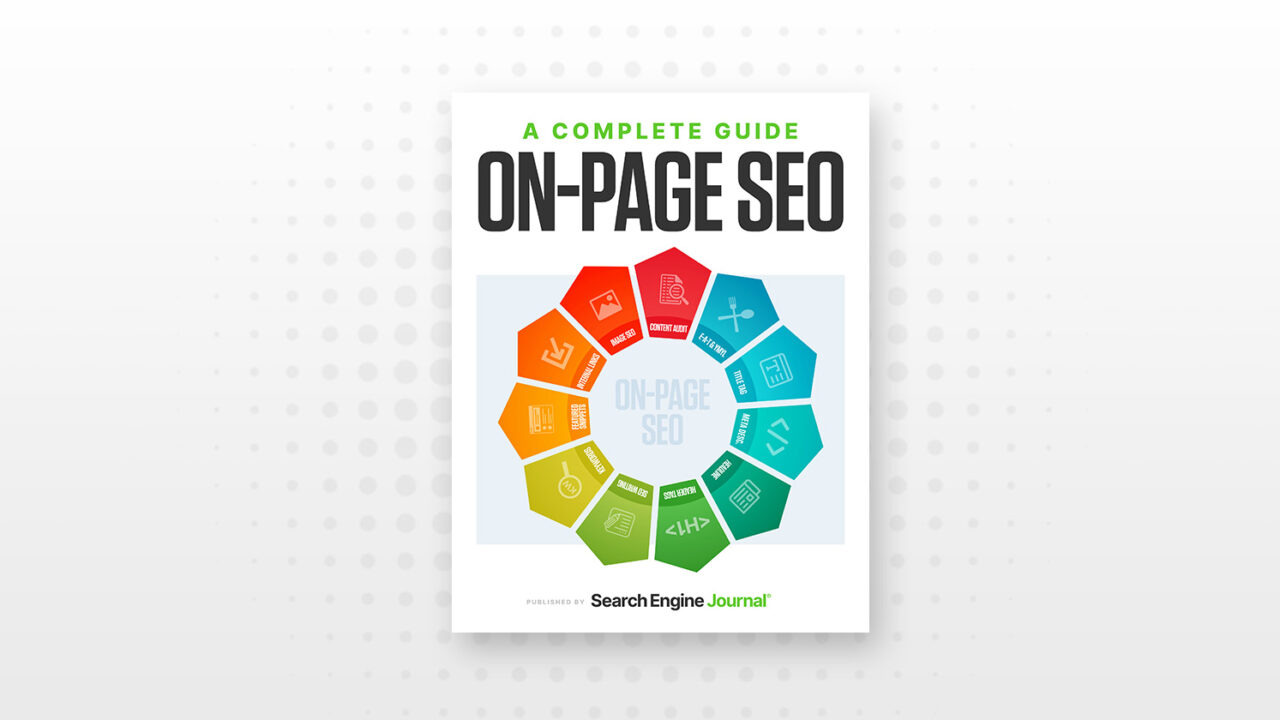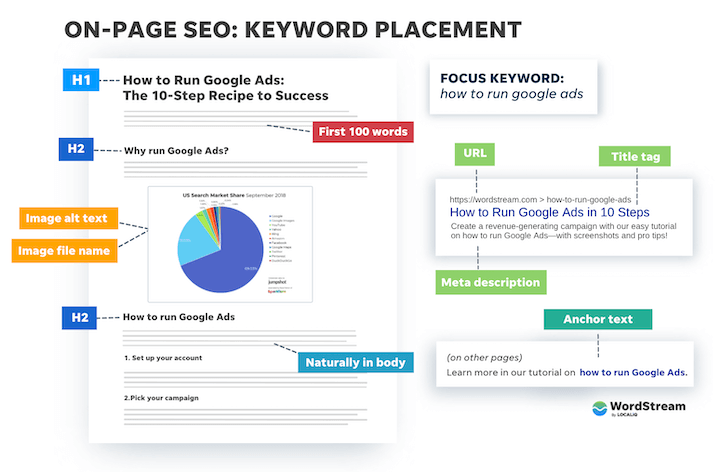On-Page SEO involves optimizing individual web pages to rank higher in search engine results. For beginners, understanding On-Page SEO is crucial for improving website visibility and driving organic traffic.
By focusing on content quality, keyword usage, meta tags, and internal linking, beginners can enhance their website’s relevance and authority in search engine rankings. This comprehensive guide will walk you through the fundamental principles of On-Page SEO, providing actionable tips and strategies to optimize your web pages effectively.
Mastering these techniques can significantly impact your site’s performance and help you achieve better online visibility in today’s competitive digital landscape.
What Is On-page Seo?
What is On-Page SEO? On-Page SEO refers to the practice of optimizing individual web pages to rank higher and earn more relevant traffic in search engines. It involves various techniques and strategies that focus on improving the content, structure, and HTML source code of a webpage to enhance its visibility and relevance to both search engines and users.
Benefits Of On-page Seo
On-Page SEO offers several benefits that can significantly impact the performance and success of your website. Let’s take a closer look at some key advantages:
- Improved search engine rankings: By optimizing your web pages, you enhance their chances of appearing higher in search engine result pages (SERPs), leading to increased visibility and organic traffic.
- Enhanced user experience: On-Page SEO ensures your website is user-friendly, with easy navigation, relevant content, and fast load times. This positively impacts user experience, reducing bounce rates and improving the likelihood of conversions.
- Increased organic traffic: When your web pages rank higher in search results, they attract more organic traffic. This can be a valuable source of targeted visitors who are actively looking for the content or products you offer.
- Higher conversion rates: On-Page SEO helps optimize your web pages for relevant keywords and user intent. This means that the visitors you attract through search engines are more likely to convert into customers or take desired actions on your site.
- Cost-effective marketing strategy: Compared to other online marketing techniques, On-Page SEO is relatively cost-effective. With the right techniques and strategies, you can achieve better results and long-term benefits without significant expenses.
Importance Of On-page Seo For Websites
On-Page SEO is crucial for websites as it directly influences their visibility and performance in search engines. Let’s explore the key reasons why On-Page SEO is essential:
- Higher search engine rankings: On-Page SEO techniques, such as optimizing meta tags, headlines, and URLs, contribute to higher search engine rankings. This means your website has a better chance of appearing on the first page of search results, increasing its visibility and organic traffic.
- Improved user experience: On-Page SEO focuses on creating user-friendly web pages with relevant and valuable content, ensuring visitors have a positive experience. Factors like fast loading speed, mobile responsiveness, and easy navigation contribute to better user engagement and reduced bounce rates.
- Targeted organic traffic: By optimizing your web pages with relevant keywords and informative content, you attract targeted organic traffic. These visitors are more likely to find exactly what they’re looking for on your site, increasing the chances of conversion and repeat visits.
- Better website credibility and authority: A well-optimized website with high-quality content and seamless user experience builds credibility and authority among both search engines and users. This can positively impact your website’s reputation, leading to more referral traffic and opportunities for link building.
Keyword Research
Keyword research is a crucial aspect of on-page SEO. Finding the right keywords helps your content reach the intended audience.
Finding Relevant Keywords
Use tools like Google Keyword Planner to discover relevant keywords. Consider search volume and competition to narrow down choices.
Using Keyword Research Tools
- Utilize tools such as SEMrush or Ahrefs for in-depth keyword analysis.
- Identify long-tail keywords for specific targeting and relevancy.
Understanding Search Intent
- Analyze search intent behind keywords to align content with user expectations.
- Craft compelling content that fulfills search intent for higher rankings.
| Tip 1 | Focus on user intent when selecting keywords. |
|---|---|
| Tip 2 | Use a mix of short-tail and long-tail keywords for comprehensive coverage. |
| Tip 3 | Regularly update your keyword strategy based on trends and performance. |
Optimizing Meta Tags
Optimizing Meta Tags is an essential aspect of on-page SEO as it directly impacts how your website is perceived by search engines and users. Properly optimized meta tags, including title tags, meta descriptions, and header tags, can significantly improve your website’s visibility and click-through rates. Let’s dive into each aspect in detail:
Title Tag Optimization
The title tag, indicated within the element in the HTML head section, is crucial for both SEO and user experience. It should be concise, containing relevant keywords and accurately describing the content of the page. A well-optimized title tag can improve organic search rankings and entice users to click through to your website.
Meta Description Optimization
The meta description, found in the tag, provides a brief summary of the page’s content. This tag should be compelling, engaging, and include relevant keywords while accurately reflecting the page’s content. It serves as a call-to-action for users to visit your website, making it an important element for on-page SEO.
Header Tag Optimization
Header tags, marked with
to
, are essential for structuring content and improving readability. Proper use of header tags not only helps search engines understand the hierarchy of information on your page but also makes it easier for users to skim and scan through the content. Each page should have exactly one
tag, which should contain the primary keyword for the page, followed by
‘s for subheadings and so on.

Creating Quality Content
Creating high-quality content is an essential aspect of on-page SEO. It involves writing valuable, relevant, and engaging content that resonates with the target audience. Quality content not only improves user experience but also attracts organic traffic and helps in ranking higher in search engine results. To ensure your content meets the necessary standards, focus on the following key elements:
Researching And Organizing Content
Conduct thorough research to understand the topics and keywords relevant to your audience. Use reputable sources and analyze competitor content to identify gaps or opportunities for improvement. Organize the information into a coherent structure to make it easily accessible and understandable for the readers. Highlight the main points and ensure a logical flow of ideas.
Using Proper Headings And Formatting
Employ proper headings (H1, H2, H3, etc.) to organize the content and create a hierarchical structure that aids in readability and SEO. Use formatting such as bold, italics, and bullet points to emphasize important information and break down large chunks of text. This not only enhances user experience but also helps search engines understand the content better.
Optimizing Content Length
Ensure each H3 heading adheres to HTML syntax, and consider the optimal length of your content. Aim to provide comprehensive information without overwhelming the reader. Balancing the length of the content is crucial to keep users engaged while also delivering valuable insights. Avoid unnecessary verbosity and prioritize clarity and conciseness.
Url Optimization
In the world of On-Page SEO, the optimization of URLs is a crucial factor that can significantly impact a website’s search engine ranking. It involves structuring and formatting URLs to be both user-friendly and favorably indexed by search engines. A well-optimized URL not only helps users understand the content of a page but also contributes to the overall SEO strategy of a website. In this section, we will delve into the nuances of URL optimization and cover essential techniques to create SEO-friendly URLs, incorporate keywords, and use hyphens for word separation.
Creating Seo-friendly Urls
When crafting URLs for web pages, it’s important to ensure that they are clear, concise, and relevant to the content they represent. A user should be able to discern the topic of a page simply by glancing at its URL. Employing descriptive words that accurately depict the page’s content can enhance user experience and contribute positively to SEO efforts. Therefore, create URLs that are easily comprehensible and reflect the page’s main subject matter.
Including Keywords In Urls
Keywords play a pivotal role in optimizing URLs for search engines. Incorporating relevant keywords into URLs can improve the visibility and relevance of a web page for specific search queries. When selecting keywords for inclusion in URLs, it’s essential to prioritize relevancy and avoid keyword stuffing. A judicious approach to incorporating keywords will contribute to a well-structured URL that aligns with SEO best practices.
Using Hyphens For Word Separation
When constructing URLs, it’s imperative to separate words with hyphens rather than underscores or spaces. Hyphens serve as word separators and aid in the readability of URLs for both users and search engines. Additionally, search engines interpret hyphens as word boundaries, which facilitates the understanding of individual terms within the URL. This helps in accurately identifying the relevance of a page to search queries and enhances the overall SEO performance of the site.
Optimizing Images
Choosing appropriate image file names:
- Use descriptive filenames related to the image content
- Avoid generic names like “image1.jpg”
Adding alt text to images:
- Include alt text that describes the image for visually impaired users
- Use relevant keywords in alt text for SEO benefits
Optimizing image size for faster loading:
- Compress images to reduce file size without compromising quality
- Choose the appropriate image dimensions for the intended display size
Internal Linking
Internal linking is crucial for enhancing on-page SEO. By strategically linking relevant pages within your website, you can boost user engagement and improve search engine rankings. Implementing a solid internal linking structure helps search engines crawl and index your site more efficiently.
Internal Linking plays a crucial role in enhancing the visibility and usability of your website. It involves linking relevant content within your website to create a logical site structure and improve the user experience. By strategically linking related pages together, you can make it easier for visitors to navigate your website, increase the time they spend on your site, and improve your search engine rankings. In this section, we will explore the key aspects of internal linking, including creating a logical site structure, linking related content within your website, and optimizing anchor text for internal links. Creating a logical site structure is the foundation of effective internal linking. A well-structured website enables search engines and users to understand the hierarchy of your content easily. To achieve this, organize your content into categories and subcategories, ensuring logical and intuitive navigation. Use appropriate H1, H2, and H3 headings to provide a clear hierarchy of your content. This not only helps search engines understand the relevance and value of each page but also assists users in finding the information they need quickly. Linking related content within your website helps establish relevance and allows users to explore related topics seamlessly. When creating internal links, consider the context and relevance of the linked pages. Linking from a blog post to other relevant articles or similar products can enhance the user experience and encourage them to spend more time on your website. By providing these internal pathways, you not only assist your visitors in finding useful information but also help search engines discover and index your content more efficiently. Optimizing anchor text for internal links is essential to provide search engines with relevant information about the linked page. When creating internal links, ensure that the anchor text accurately reflects the content of the linked page. For example, instead of using generic phrases like “click here” or “read more,” use descriptive and keyword-rich anchor text that gives insight into what users can expect to find on the linked page. This helps search engines understand the context and relevance of the linked content, thereby improving the ranking of your pages in search results. When implementing internal linking strategies, it is crucial to adhere to HTML syntax guidelines. This ensures that search engines can properly identify and crawl your internal links. Each internal link should be coded using the appropriate HTML syntax, which typically involves using the tag with the “href” attribute. Additionally, you should use the correct heading tags (e.g.,
Monitoring And Analytics
Google Analytics is a crucial tool in understanding your website’s performance.
- Set up Google Analytics by creating an account and embedding the tracking code on your website.
- Access valuable data such as traffic sources, page views, bounce rates, and more.
- Analyze user behavior to tailor your on-page SEO strategies effectively.
Monitoring key metrics is vital to measure the success of your SEO efforts.
- Focus on metrics like organic traffic, keyword rankings, conversion rates, and click-through rates.
- Track these metrics regularly to identify trends and areas for improvement.
Continuous analysis and iteration are key to optimizing your website for search engines.
- Use Google Analytics data to identify strong and weak points in your SEO approach.
- Iterate on strategies based on data insights to enhance your website’s SEO performance.

Frequently Asked Questions For On-page Seo: Complete Guide For Beginners
How Do I Start On-page Seo As I Am Beginner To This Field?
To start on-page SEO as a beginner, follow these steps: 1. Conduct keyword research to identify relevant keywords for your website. 2. Optimize your website’s title tags, meta descriptions, and headings with your target keywords. 3. Create high-quality and unique content that incorporates your keywords naturally.
4. Improve your website’s loading speed and mobile-friendliness. 5. Build internal and external links to enhance your website’s authority. Remember to analyze and update your SEO strategy regularly to stay competitive.
How Can I Start Seo As A Beginner?
To start SEO as a beginner, follow these guidelines: 1) Start by optimizing your website’s on-page elements like titles, headings, and meta descriptions. 2) Conduct keyword research to find relevant terms for your content. 3) Create high-quality, informative content for your target audience.
4) Build backlinks from reputable websites to improve your site’s credibility. 5) Regularly track and analyze your SEO efforts using tools like Google Analytics.
Is On-page Seo Easy?
Yes, it can be easy if you follow best practices. By optimizing content, tags, and images, you can boost on-page SEO. Regular updates and quality content also make a difference. With some effort and knowledge, you can improve your website’s visibility.
What Is An Example Of On-page Seo?
Optimizing meta tags like title, description, and headers for keywords is an example of on-page SEO.
Conclusion
By implementing these on-page SEO techniques, beginners can enhance their website’s visibility and drive more organic traffic. Remember to optimize meta tags, improve content quality, and boost website speed for a better user experience. Stay consistent with your efforts and monitor performance to achieve long-term success in the digital landscape.


